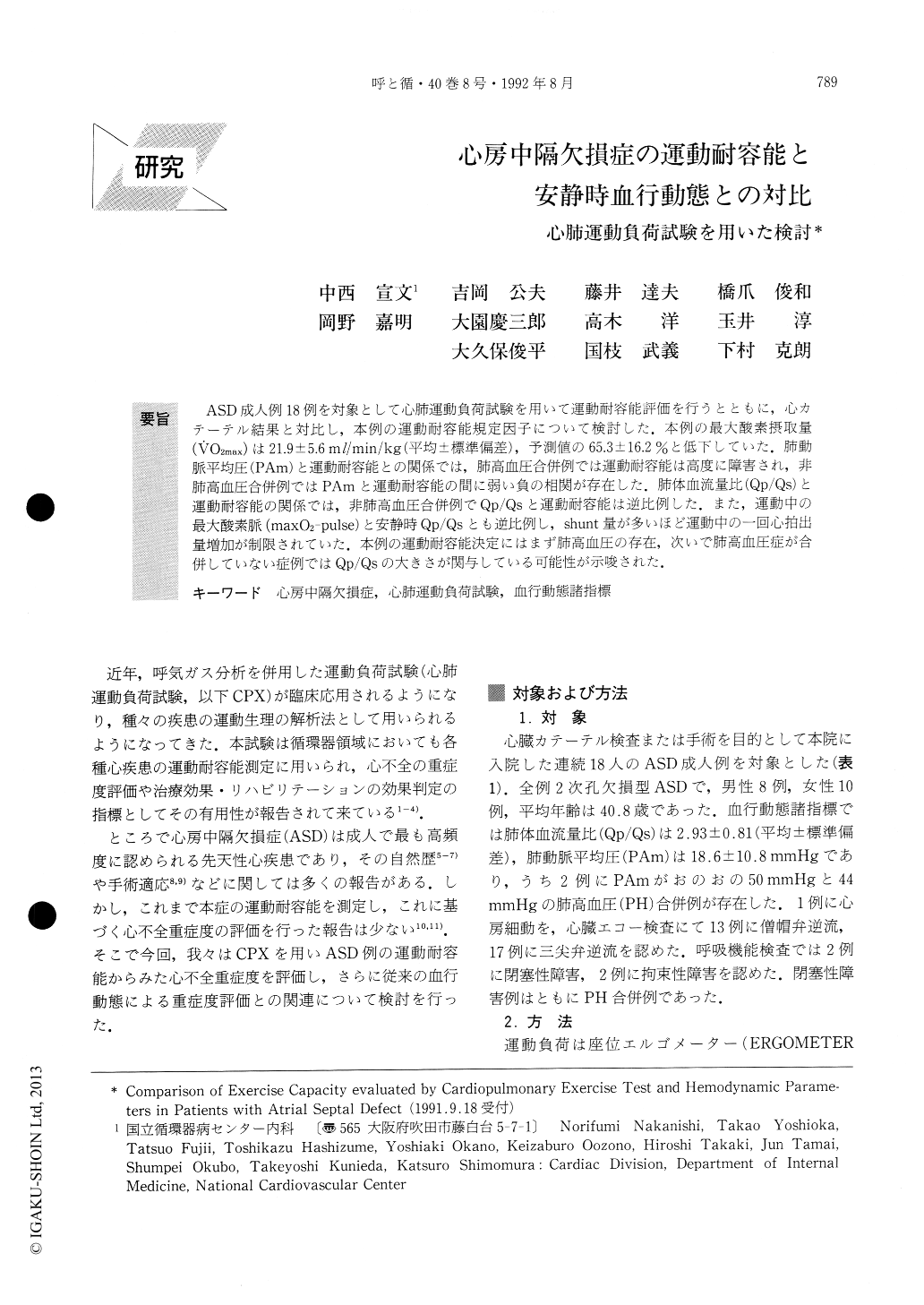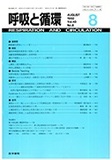Japanese
English
- 有料閲覧
- Abstract 文献概要
- 1ページ目 Look Inside
ASD成人例18例を対象として心肺運動負荷試験を用いて運動耐容能評価を行うとともに,心カテーテル結果と対比し,本例の運動耐容能規定因子について検討した.本例の最大酸素摂取量(VO2max)は21.9±5.6 ml/min/kg(平均±標準偏差),予測値の65.3±16.2%と低下していた.肺動脈平均圧(PAm)と運動耐容能との関係では,肺高血圧合併例では運動耐容能は高度に障害され,非肺高血圧合併例ではPAmと運動耐容能の間に弱い負の相関が存在した.肺体血流量比(Qp/Qs)と運動耐容能の関係では,非肺高血圧合併例でQp/Qsと運動耐容能は逆比例した.また,運動中の最大酸素脈(maxO2-pulse)と安静時Qp/Qsとも逆比例し,shunt量が多いほど運動中の一回心拍出量増加が制限されていた.本例の運動耐容能決定にはまず肺高血圧の存在,次いで肺高血圧症が合併していない症例ではQp/Qsの大きさが関与している可能性が示唆された.
We evaluated the maximal exercise tolerance using cardiopulmonary exercise testing, and investigated the relation of the hemodynamic parameters such as mean pulmonary artery pressure (PAm) and pulmonic-to-systemic flow ratio (Qp/Qs) to exercise tolerance in 18 adult patients consecutively. All the patients had atrial septal defect (ASD). Maximal oxygen uptake (VO2 max) averaged only 21.6±5.6 ml/min/kg and 63.5±16.2% of the predicted values (VO2max). And anaer-obic threshold averaged 12.5±2.3 ml/min/kg and 56.7 ±12.4% of the predicted values.

Copyright © 1992, Igaku-Shoin Ltd. All rights reserved.


